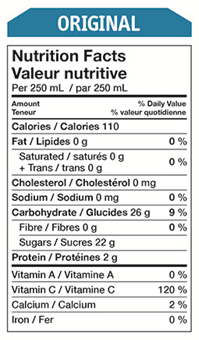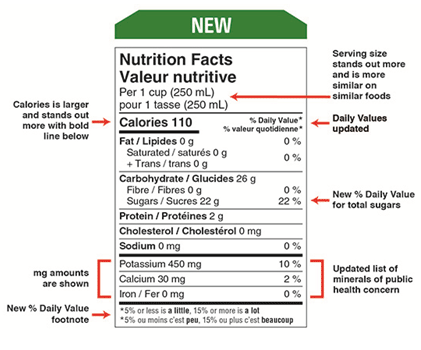Understand Nutrition Labelling to make Healthier choices
ou’re standing in the bakery aisle, trying to compare the nutritional value of 2 loaves of bread.
It may seem that all wheat breads are created equal, but the nutrition facts label can tell otherwise. Get on track to making healthier choices by learning how to decipher and assess the nutritional value of your favourite food.
What is nutrition labelling?
To help consumers understand what they're eating, the government of Canada introduced mandated nutrition labelling on all prepackaged foods in December 2007. The nutrition label has plenty of information to help you make healthy choices at the grocery store. Nutrients, ingredients, and some optional nutrition claims are shown, but the main part of the label is the nutrition facts table. This table shows the number of calories, the serving size used to calculate it as well as 13 core nutrients and their percent daily value (% DV).
How can the nutrition facts table help you?
All the information in the nutrition facts table is based on an amount of food, which is always found at the top of the table. The standard nutrition table includes calorie count and 13 core nutrients that must always appear in the same order to make the nutrition facts easy to identify and use. Those nutrients include fat, saturated fat, trans fat, cholesterol, sodium, carbohydrates, fibre, sugars, protein, vitamin A, vitamin C, calcium and iron. Some companies further break down the facts – specifying the types of unsaturated fats or adding more vitamins and minerals – to highlight their product’s healthy contents.
When comparing 2 products, always check the serving size first. To find recommended healthy serving sizes, refer to Canada's Food Guide. The nutrition facts table and Canada’s Food Guide will be useful to help you make an informed decision about which foods to buy.
6 keys to healthy eating using the nutrition table
- Check the calories.
- Avoid trans fat. If the word hydrogenated or partially hydrogenated is used on the label, there are traces of trans fat, which has been linked to heart disease, adult-onset diabetes and Alzheimer's disease.
- Stick to less than 2300 mg of sodium, the recommended daily amount. To help decrease the risk of hypertension, try to lower your intake to 1500 mg per day or less.
- Aim for 25 to 35 g of fibre per day. Be careful not to overdo it though, as too much fibre at once can cause stomach upset.
- If sugar is the first ingredient listed, it should raise a red flag. The maximum daily intake of sugar should be 100 grams.
- Remember, just because something is fat-free doesn't mean that it is good for you. Choose food with omega-3 and -6 fatty acids and try to eat snacks and meals that are low-sodium and contain fibre.
Eating healthy doesn't have to be difficult. Once you know what the nutrition label says, you can decide if it’s something you can eat often, occasionally or that you’d rather eliminate from your diet.
Food labelling changes well underway
Health Canada has improved the nutrition facts table, based on feedback from Canadians. Learn more about these upcoming changes to the nutrition table. Highlights include:
- Increased font size for serving sizes and calories.
- Sugar expressed as a percent daily value (% DV) based on a daily value of 100 grams.
- Potassium will be included, a nutrient many Canadians are lacking in.
- Vitamins A and C will be removed because most Canadians get enough of these nutrients in their diets.
Here is an example comparing the current nutrition label with the new label:


The information in this article has been adapted from the following web sites. For more on this topic, visit:
Canadian Living: Learn how to decode a nutrition facts label
Health Canada: Understanding Food Labels
The information and advice in this article are provided for informational purposes only. The Personal shall not be liable for any damages arising from any reliance upon such information or advice. The Personal recommends using caution and consulting an expert for comprehensive, expert advice. It is also recommended that you consult the owner's manual and follow the manufacturer's instructions and guidelines with respect to the use, installation and storage of products referred to herein.
